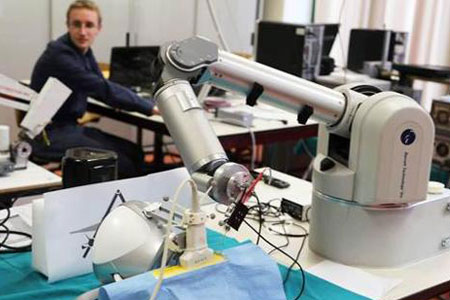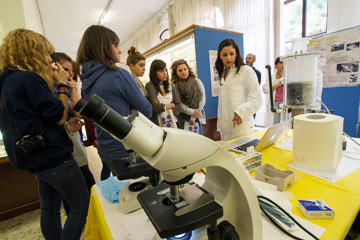Relatore:
Cristian Secchi
- DISMI - University of Modena and Reggio Emilia
martedì 9 novembre 2004
alle ore
17.00
A bilateral telemanipulation system consists of a robotic interface (master) through which an operator can drive a remote robot (slave) that can interact with a remote, possibly unknown, environment. In order to give the operator the feeling of actual operation, the interaction force affecting the slave is fed back to the master. The non negligible, possibly variable and unreliable, communication delay between master and slave sides and the interaction with unknown environments has a destabilizing effect on the overall system. In this talk, it is shown how to couple port-Hamiltonian modeling framework with passivity theory to get a telemanipulator characterized by an intrinsically stable behavior. Intrinsically passive controllers (IPC) are used to stabilize the interaction and scattering theory is exploited to achieve a passive, not destabilizing, communication in case of fixed delays. In order to take into account the sampled data nature of the controllers while preserving a stable interaction, a passivity preserving discretization algorithm is proposed. Furthermore, a packet switched scattering based communication strategy is defined to allow the use of Internet for the exchange of information between master and slave sides. It is shown that the proposed communication strategy is passive both in case of packet loss and of variable transmission delays. Finally a passivity preserving algorithm for rebuilding lost packets from received data is illustrated.
- Luogo
-
Ca' Vignal - Piramide,
Piano 0,
Sala Verde
- Referente
-
Paolo
Fiorini
-
Referente esterno
-
- Data pubblicazione
-
18 ottobre 2004







